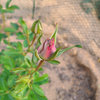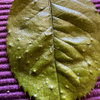different soils in the valley; some worse than others?
richsd
10 years ago
Related Stories

GARDENING GUIDESHow to Stop Worrying and Start Loving Clay Soil
Clay has many more benefits than you might imagine
Full Story
GARDENING GUIDESGardening Solutions for Heavy Clay Soils
What’s a gardener to do with soil that’s easily compacted and has poor drainage? Find out here
Full Story
GARDENING GUIDESHow to Pick a Mulch — and Why Your Soil Wants It
There's more to topdressing than shredded wood. Learn about mulch types, costs and design considerations here
Full Story
GARDENING GUIDESInvite Cellophane Bees to Your Garden by Providing Patches of Bare Soil
Look for cellophane bees (Colletes) pollinating flowering trees and shrubs in U.S. gardens this spring
Full Story
LANDSCAPE DESIGNFlood-Tolerant Native Trees for Soggy Soil
Swampy sites, floodplains, even standing water ... if you've got a soggy landscape, these trees are for you
Full Story
GARDENING GUIDES10 Solutions for Soggy Soil
If a too-wet garden is raining on your parade, try these water-loving plants and other ideas for handling all of that H2O
Full Story
GARDENING GUIDESGrow a Beautiful Garden in Alkaline Soil
Got alkaline soil? Learn how to manage it and the many beautiful plants that will thrive in this ‘sweet’ soil
Full Story
GARDENING GUIDESHave Acidic Soil in Your Yard? Learn to Love Gardening Anyway
Look to acid-loving plants, like conifers and rhododendrons, to help your low-pH garden thrive
Full Story
FARM YOUR YARDHow to Get Good Soil for Your Edible Garden
The nutrients in your soil feed the plants that feed you. Here are tips on getting it right — just in time for planting season
Full Story
GARDENING GUIDES5 Prairie Wildflowers That Can Heal Your Soil
Get free, organic soil fertilizer with nitrogen-pumping plants that draw pollinators too
Full StoryMore Discussions








AZGardenQueen
richsdOriginal Author
Related Professionals
Holly Springs Landscape Architects & Landscape Designers · Glassmanor Landscape Architects & Landscape Designers · Hyattsville Landscape Architects & Landscape Designers · Waunakee Landscape Architects & Landscape Designers · Arlington Landscape Contractors · Bowie Landscape Contractors · Deer Park Landscape Contractors · Fort Payne Landscape Contractors · Las Vegas Landscape Contractors · Pikesville Landscape Contractors · Seminole Landscape Contractors · Shaker Heights Landscape Contractors · Tamarac Landscape Contractors · Holliston Carpenters · Palmetto Bay CarpentersAZGardenQueen
Fascist_Nation
lazy_gardens
campv 8b AZ
AZGardenQueen
jaspermplants
campv 8b AZ
AZGardenQueen
richsdOriginal Author
lazy_gardens
richsdOriginal Author
lazy_gardens
tomatofreak
richsdOriginal Author
tomatofreak